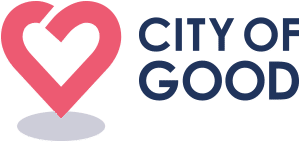
Identifying KPIs or metrics for community success
If choosing how to frame the success of your community is challenging, the task of choosing metrics or key performance indicators (KPIs) to measure that success is sometimes even more so.
The developers admit they’ve struggled to look for metrics to present to their management, board, or funders to illustrate how successful their community has been.
Again, this isn’t for lack of trying. Different people within a community have different (and sometimes even conflicting) perspectives on success, making it necessary to identify multiple sets of metrics and KPIs to accommodate these varying viewpoints.
Unlocking the multiple meanings of community success
To come up with relevant metrics, one of the first things you can do is ask the question: Who needs a “measure” of community success?
Funders, board members, and community managers
Community stakeholders like board members, senior managers, and funders tend to favour concrete outcomes, which is both a good and bad thing for community developers.
Let’s start with the good.
Having a hard target like funding makes it easier to measure your work with known benchmarks. For example, if the objective is to raise a specific amount of funding in X amount of time, you can simply track donor and donation growth. In this case, you’ll want to talk to your board members and senior managers to come up with a realistic funding target.
But that’s just the first step. As you raise funds, you also need to think about how to measure the outcomes of your community efforts to hold yourself accountable to your funders.
“As an organisation, measurements are unavoidable because we also need funding and need to justify and show results to the funders,” explains Hooi Boon of Beyond Social Services. This means you’ll need to have a discussion with your board, managers, and funders about the kind of outcomes you should be evaluating. And it’s here where you might run into some problems.
Bee Leng notes that wrong KPIs drive wrong behaviours that may be contrary to community work intent and principles—so we must be very careful and wise, especially in the beginning years, about what we measure.
She adds that though it may be inevitable that funders dictate the KPIs, it is important for community developers, besides serving funding requirements, to influence funder perspective in the following ways:
- “Better Practice” gleaned from learning (especially from failures) rather than “Best Practice”. The former is more helpful for community building.
- Building community “at the pace of trust”. Authentic community building needs time to strike roots and bear sustainable fruit. Hence, funding and KPI measures should have a longer time orientation.
- Besides quantitative KPIs, curating stories—qualitative data—that capture the nuances of community practice are important in uncovering both outcomes and processes.
In other words, metrics for traditional outcomes and definitions of success may no longer be relevant.
The workaround to this is simple but may take time for community stakeholders and funders to embrace.
For starters, you need a more holistic approach when framing success in your community. Instead of measuring KPIs such as gifts secured, donation rates, or annual membership growth, your conversations with your leaders and funders can focus on things like:
- Strength of relationships
- Number of collaborations
- Informal help rendered between community members
You may need to go back to the drawing board to discuss your community’s vision and create new milestones and success measurements with the help of these stakeholder groups. Timothy of Rainbow Centre Singapore asserts that there’s a need to change perceptions among funders and move from measuring successes to “treasuring” successes for communities to really be able to grow and flourish.
“Sometimes, we miss focusing on the things important to the success of a community because they are difficult to measure and quantify; things such as associational life, interdependence of individuals or quality of relationships,” he explains. “Instead, we focus on the things we think funders want to hear. We can sometimes lose sight of what we really want to achieve when we unwittingly focus on measurements”
Community members
Every member has different ideals and definitions of success. Everyone experiences a community differently. Therefore, developers should take the time to understand success through the lens of their community members to understand what outputs or outcomes could or should be measured.
For example, Atiqa of Repair Kopitiam, a community working to reduce electronic waste (e-waste) in Singapore by repairing everyday items, explains that their goal is to bring in more members into the community who are aligned with this approach to e-waste management. For their members, success means being able to get their items repaired instead of discarding them in the trash.
But that’s just one dimension of success. Danny, also of Repair Kopitiam had this to say: “Sometimes people ask me, ‘How many friendships have you helped to form in Repair Kopitiam?’ But that’s so difficult to measure! How to measure social networks?”
Taking another example, in a workplace community, two different colleagues may have different ideas of what a successful community is like. One colleague may feel that the community is strong because he has a few close friends he spends time with and finds other colleagues he rarely interacts with else approachable. On the contrary, another colleague may feel that the community is too cliquish and thus “unsuccessful”.
The key, then, is to understand how your members see the value of your community. It might be that some members have tangible goals while others have more abstract ones, like forming relationships or having a sense of belonging.
Previous Chapter: Should Community Developers be Measuring Success?
Next Chapter: 5 Examples of Community Success Measurements






















